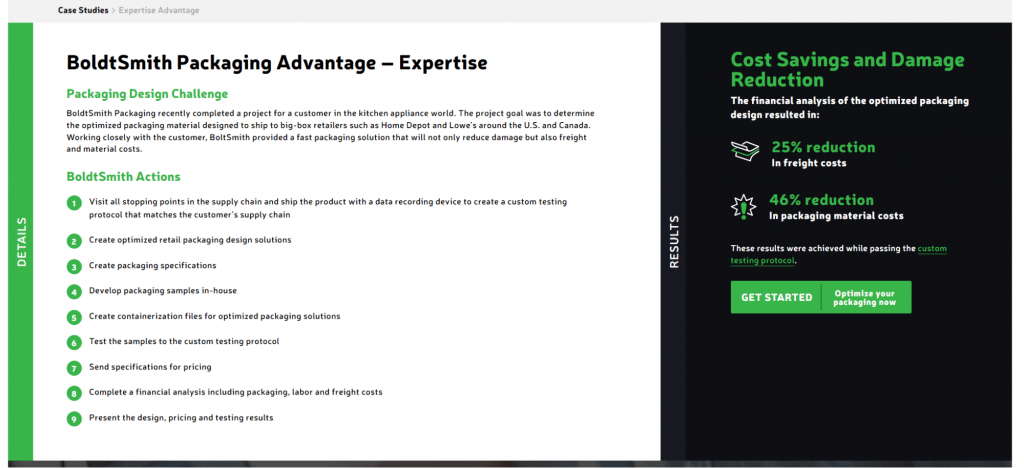Would you like to save some money?
I’m sure we all would. And if you’re looking to start 2023 by getting your business into fighting-fit condition, scrutinizing those operating costs is the way to go.
In this article, we’ll look at some of the top ways you can reduce operational costs and help maximize your business’s efficiency, including these top eCommerce cost reduction tips.
But first, let’s quickly talk about the benefits of operational cost reduction.
The Importance of Cost-Cutting For eCommerce
As you work to grow your eCommerce business, you probably spend a lot of time thinking about attracting new customers and reducing bounce rates on your site.
While focusing on sales growth is, of course, vital for any thriving retail business, it’s crucial not to overlook cost reduction as a way of improving margins. The costs of running an online business soon mount up.
Operating expenses such as inventory storage fees, packaging or shipping costs, and web hosting charges may be unavoidable. However, that doesn’t mean they can’t be minimized.Spending even a small amount of time regularly reviewing those costs, you’ll boost your bottom line over the long term.
So let’s have a look at a few ideas for how you can implement effective cost reductions in 2023.
Top eCommerce Cost Reduction Tips
When you’re wondering about where to start with cost-cutting, there will be low-hanging fruit you reach for first. Each business is different, and your own circumstances will dictate which approach will have the most significant impact.
If you’re literally just getting started and are trying to cut costs while you apply for an EIN, that’s a very different position to be in than if you’re already running a successful and long-established international eCommerce operation.
But whatever your situation, most businesses will benefit from trying some combination of the following ideas:
- Negotiate with suppliers
- Outsource business functions when possible
- Hire smart
- Review your marketing strategy
- Identify and eliminate waste
- Implement eco-friendly practices
- Reduce returns
Let’s take a closer look at each.
1. Negotiate with Suppliers
A good place to start if you’re planning to negotiate with your existing suppliers on price is to read the existing contract. Buried in the terms and conditions, you’ll sometimes find options for reducing fees. It may be, for example, that some of your suppliers offer discounts for large orders. Volume discounts like this are fairly common, so it’s worth double-checking whether they’re available.
Even if you don’t see anything useful in the contract, it still doesn’t hurt to try to renegotiate terms. Here are some examples of strategies you may be able to use to strike a deal:
- Ask for their loyal customer discount. For suppliers you’ve worked with for a long time, you can point to your flawless payment history and/or large regular order volume to ask for a deal on price. And if you know that your business accounts for a substantial proportion of the supplier’s turnover, so much the better.
- Compare their competitors. See whether you can source a few quotes from your suppliers’ competitors. If they’re cheaper, that gives you the upper hand. You can either take the quote to your supplier to ask them if they can match it, or you can simply switch suppliers.
2. Outsource Business Functions When Possible
There are many business tasks that don’t need to be done in-house. Outsourcing some of these can save you money in terms of staff costs. Additionally, you may find that doing this frees up more time for your team to concentrate on more revenue-generating work. Consider farming out these jobs to third-party experts:
- Web design and maintenance. Sure, your site will need regular maintenance, because it’s the core of your business, but this can easily be done by a separate company.
- IT support. If your data system is relatively straightforward, there’s no need to have your own IT support team. You can easily get all the support you need from a dedicated support center. They’ll also be able to help you with all sorts of arbitrary needs that crop up, whether it’s integrating an online fax number in Canada or other locations or implementing feature upgrades.
- Customer service. It can feel quite natural to keep customer service responsibilities in-house, because who knows your customers as well as you do? In actual fact, many businesses now use third-party customer support services. If you can make this work, the cost savings can be superb.
3. Hire Smart
As well as engaging third-party services on an ongoing basis, you should consider using freelance professionals for short-term tasks when looking to reduce operational costs. That’s because it’s cheaper to hire per task than to employ another team member full-time. The boom in start-ups and freelancing over the last few years has seen a flood of talented professionals come onto the market.
In fact, the main challenge when hiring freelancers is narrowing down which ones to use. Sites such as Upwork and Fiverr can be a great place to start, as they provide lots of information about each freelancer’s skills and experience. Suitable jobs for freelancers might include:
- Graphic design. It’s crucial that your website is kept as fresh and up-to-date as possible. A professional graphic design freelancer will be able to help you out with everything from individual product images to an entire suite of brand visuals.
- SEO. Getting an experienced freelancer in to supercharge your SEO strategy can also help boost revenue.
- Copywriting. Good copywriters only need a brief and a style guide to create copy that’s perfect for your business. You can use a template to create your style guide, like the one below, if you don’t already have one.

[Source: Writer]
4. Review Your Marketing Strategy
If it’s been a while since you did a marketing audit, now’s the time. It’s all too easy to stick to the same old ideas. But as your business grows and develops, your circumstances will change — and so should your eCommerce marketing.
Here are some suggestions to get you started.
- Use all the available tools at your disposal to dig deep into what kind of ROI you’re getting from your current marketing efforts. Which channels are providing the best bang for your buck, and which are lagging?
- Explore new avenues. If you’re mostly relying on paid search ads, why not consider Instagram marketing or cross-promotion opportunities?
A full overhaul of your marketing priorities will help you cut costs. Done right, it can increase your reach as well.
5. Identify and Eliminate Waste
This could be physical waste, like using excessive packaging. Alternatively, it could be financial waste, such as paying for apps you no longer use. Either way, finding those cost sinks and getting rid of them can mean significant savings.
It’s easier said than done, because these money holes are not always obvious. One effective way of approaching this problem is to ask your employees. Often, team members notice wasteful processes because they have to deal with them on a daily basis.
Why not provide an incentive? Offering a small bonus for each issue reported could save your business thousands in the long run.
6. Implement Eco-Friendly Practices
If you’re looking to eliminate waste anyway, a focus on upping your eco-friendly credentials, in general, would dovetail nicely.
We’ve already mentioned ditching excessive packaging. Reviewing how you pack and ship goods can be a revelation. Even minor changes in materials or box design can lead to substantial savings. The packaging consultant firm BoldtSmith saved one client 25% in freight costs and 46% in packaging costs with one single packaging analysis cycle.

[Source: BoldtSmith Consultants]
If you operate from an office, there are a number of environmentally friendly steps you could take to save money. You can review your energy usage or see whether you can go paperless (or as near to it as possible). It might seem impossible to do entirely without printing, but even cutting down can have an impact on total costs over time.
7. Reduce Returns
The growing trend for eCommerce automation software, such as the ReturnLogic returns management tool, is making the business of handling returns much simpler. But could you find ways of reducing returns across the board?
After all, it’s an annoying expense. When you make a sale, it’s frustrating when it bounces back. You’ve already invested in shipping and labor costs, and there’s no certainty that you’ll be able to resell returned items.
Granted, some level of returns is to be expected, especially if you supply items like clothing or shoes, which are often returned because the fit’s not quite right. Nevertheless, there are tactics you can use to try to get those return numbers down.
First of all, make sure you have the basics right. Your product descriptions should all be as accurate and packed with as much information as possible.
But assuming you’re already doing that, is there anything else you can try?
Well, one thing you can do is to give your customers a nudge by extending the deadline for returns. It sounds counter-intuitive, but the longer a customer has to decide whether to return an item, the less likely they are to follow through.
That’s because when they receive their goods, they don’t feel immediate pressure to make a decision about keeping them or not. And the longer they take to decide, the more likely they are to just hold on to what they’ve bought.
Other Ideas
Here’s a brief rundown of a few other options you could try to reduce your operational costs:
- Pay bills in advance. This isn’t relevant in every situation or with every bill. However, in the case of large recurrent billing cycles that are predictable, it’s sometimes possible to negotiate small discounts if you’re willing to pay upfront.
- Barter. Do you supply items that other businesses may find useful? It might be worth asking to swap goods or services with them.
- Reduce inventory. Carry out an inventory audit to see whether you’re storing more than you need to. You might be able to cut down on storage costs.
- Downgrade your travel budget. If you’re still doing a lot of meetings in person, why? Take advantage of the growing enthusiasm for remote communication and save a pile of cash in the process.
Final Thoughts: Slash Those Costs
The truth is that getting a handle on costs boosts profitability, which is the goal of every business. And it really doesn’t have to mean overworking your employees or reducing customer service standards.
What’s vital when asking yourself how to reduce operational costs, is to look into the detailed figures as well as the big-picture ones. Close attention to each process is key to unearthing cost reduction opportunities. So cast a critical eye over every aspect of your business and watch that bottom line benefit!

Jessica Day
Jessica Day is the Senior Director for Marketing Strategy at Dialpad, VoIP for businesses in Canada. It’s a global modern communications platform that takes every kind of conversation to the next level — turning conversations into opportunities. She is an expert in collaborating with multifunctional teams to execute and optimize marketing efforts, for both company and client campaigns.
Comments
comments
Powered by Facebook Comments

![Full Guide to Making a Product Video That Converts [+ Examples]](https://thegateway.net.au/wp-content/uploads/2022/09/full-guide-to-making-a-product-video-that-converts-examples-768x587.jpg)



![Winning TikTok Video Ideas and Best Practices [+ Examples]](https://thegateway.net.au/wp-content/uploads/2022/03/winning-tiktok-video-ideas-and-best-practices-examples-768x249.png)
